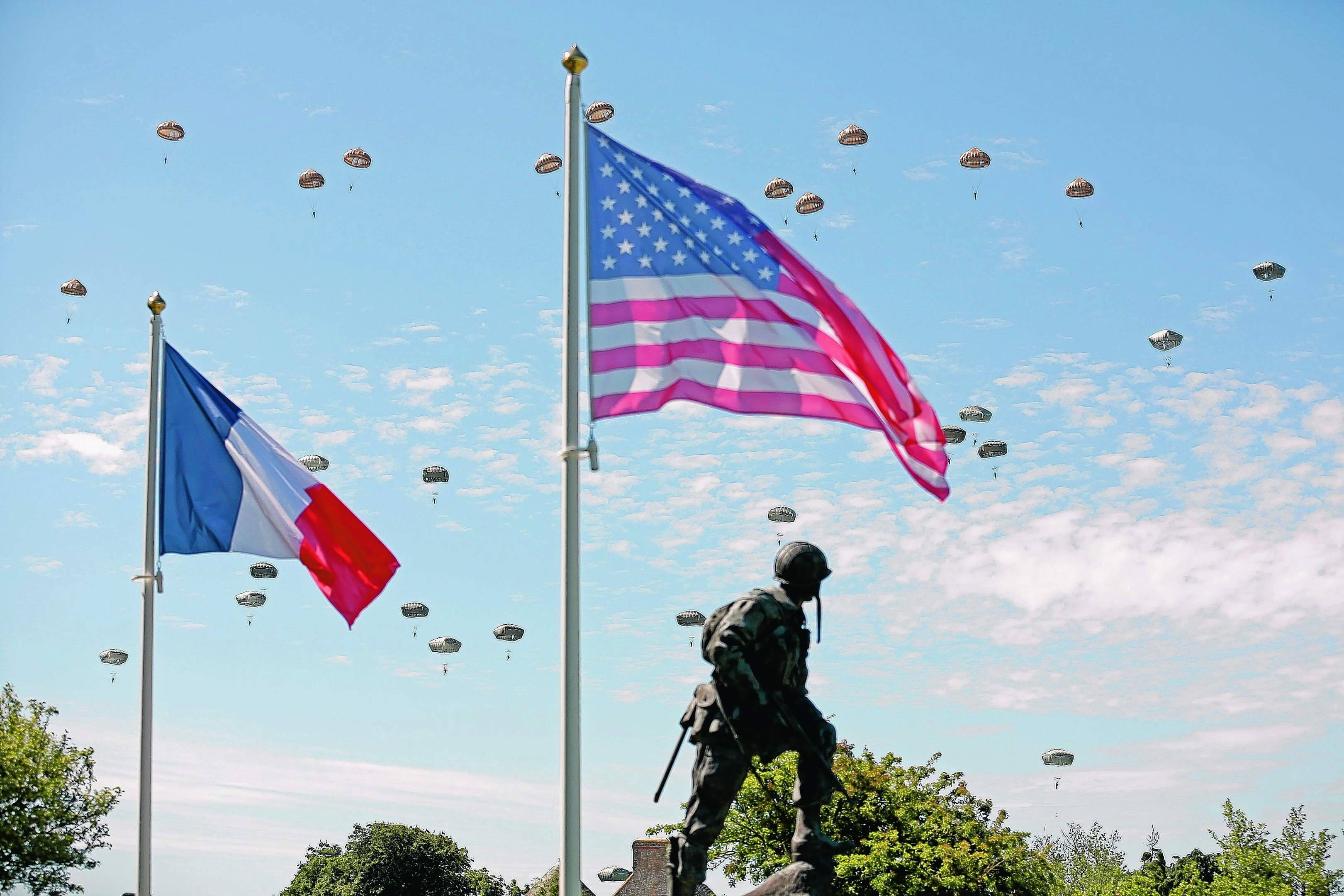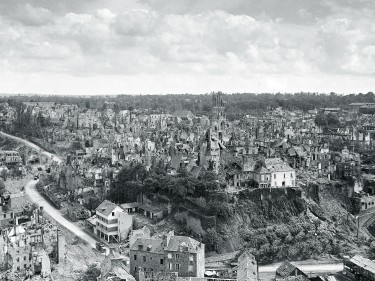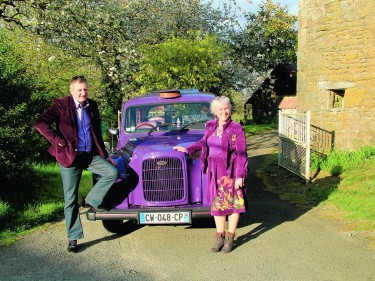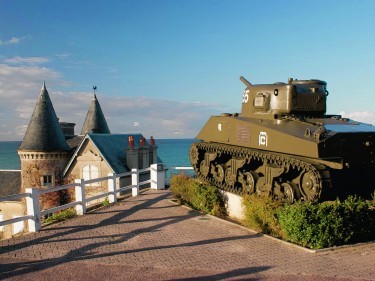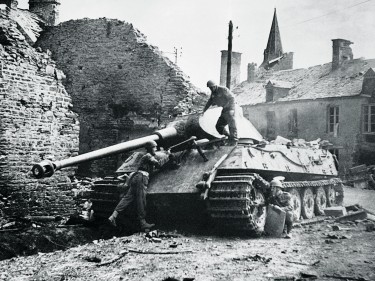Natalie Marchant heads to Normandy for an emotionally challenging glimpse into the horrors of World War II
Staring out over the peaceful Dives valley in Lower Normandy, it’s hard to imagine anything out of the ordinary ever happened here.
With its fields, picturesque villages and the occasional church spire piercing the sky, it’s very much the picture postcard of France.
Yet it was here, just 70 years ago, that one of the bloodiest battles of World War II took place, described by General Montgomery as “the beginning of the end of the war”.
Most people associate the Battle of Normandy with the events of June 6, 1944 – D-Day.
OPERATION OVERLORD
On that day, 135,000 troops and 20,000 vehicles crossed the English Channel and came ashore as part of Operation Overlord – the beginning of the major Allied offensive against the Germans that eventually led to victory in Europe.
The remains of the Mulberry Harbour at Arromanches – a temporary port constructed of massive concrete blocks towed over from England – are reminders of the sheer scale of D-Day.
Even though many of the Allied targets for the day were not reached, it was largely deemed a success.
But June 6 merely marked the beginning of the Battle of Normandy, which raged for three months before ending when the Falaise pocket in the Dives valley was closed.
As events are being held across Europe to mark this summer’s centenary of the outbreak of World War I, and along the Normandy coast to mark the 70th anniversary of D-Day, it seems an appropriate time to visit the region.
My partner’s grandfather had fought in the Battle of Normandy, most likely at the Falaise pocket. But, like many others of that generation, he never talked about it, so we were keen to try and find out what might have happened.
Arriving by ferry at Le Havre, we drive inland to the Orne region of Lower Normandy, staying with Sylvie and Frederic Leblond in Sainte Opportune, about an hour south of Caen.
The couple run La Bergerie, a converted farm where the barns and outhouses have been turned into guest bedrooms. The setting is idyllic, and we while away part of an afternoon sitting under a cherry tree, before having a wonderful dinner with our hosts.
Former tour guide Sylvie and taxi driver Frederic have combined their talents to come up with a novel way of showing guests this corner of Normandy and the role it played in the war: they conduct tours of the region in a purple London Hackney cab. It’s fully kitted out with Union Flag cushions, purple interiors and even a solar-powered waving Queen on the dashboard.
We begin our tour at the tiny Musee de la Liberation de Berjou, in a village which sits high on a ridge in countryside thick with trees and hedgerows. This was where British troops successfully fought the Germans in August 1944 to take the heights of Berjou during Operation Blackwater – the campaign which would force the enemy into the Falaise pocket.
ARTEFACTS
Three years ago, local man Roman Bon started scouring the nearby fields with a metal detector. He turned up items such as helmets and shells and soon collected enough to open the two-room museum. This prompted elderly members of the local community, many of whom had never spoken about the war, to talk, and they too started to dig out old artefacts from their homes.
The resulting collection is one of the most personal I’ve ever seen.
Among the items are a German helmet, used for the past few decades as a tool to scoop up chicken feed, and a British Army bag, which the owner later used to store a chainsaw. One visitor to the museum even made the alarming discovery that she had a German mine propping up the beams in her house, after seeing a similar exhibit on display. It is such tales that make this museum so fascinating, reminding us that civilians were just as affected by war as those serving.
The Battle of Berjou is also notable as an example of the British struggle in the Battle of Normandy, often overshadowed by the stories of the American breakout through German lines further west.
Before we leave, we stop at the field where the most intense fighting took place. Pinned on a fence is a simple wooden cross.
FALAISE CASTLE
After breaking for lunch in the shadow of Falaise Castle, the birthplace of William the Conqueror, we continue to Montormel and the Dives valley. This is where 100,000 retreating Germans were encircled by nine Allied divisions in August 1944, in what became known as the Battle of the Falaise Pocket.
Allied troops pushed the Germans from all sides, until the Canadian and Polish troops closed the resulting gap – or escape route, near the site of what is now the Memorial de Montormel.
The memorial’s museum uses a 3D model to retell the events that took place that summer, explaining how German attempts to flee towards Paris were thwarted by the deceptively deep river Dives. There were just two crossings – a small bridge at the village of St Lambert-sur-Dives and a ford at nearby Moissy – leaving the 6km German escape route horribly exposed.
In the face of constant shelling, machine-gun fire and aerial bombardment, the roads became blocked by bodies and abandoned vehicles.
By the time the battle ended on August 22, 1944, some 10,000 German troops were dead, 40,000 captured, and the countryside littered with shells, military equipment and bodies. In one village alone, there were 1,500 dead horses.
Locals spoke of the air being thick with flies and the groundwater was polluted for years afterwards. US General Eisenhower, upon visiting the site, described it as “one of the greatest slaughters of the war”.
To commemorate the 70th anniversary of the battle, the Circuit Aout 44 route has been created to guide you around 10 key sites and highlight the price paid by troops and civilians alike.
Among the points on the route, which can also be done by foot or by bike, is Tournai-sur-Dives, where Abbot Launey presented the surrender of 300 Germans to a single Canadian officer. The white flag he hung on the church steeple is at the Memorial de Montormel museum. It also takes us to Chambois, where the gap was closed with a symbolic handshake between Polish and American troops on August 19, as well as Moissy and St Lambert, at the start of the Corridor of Death.
Revisiting the events of 1944 is emotionally challenging, but reflecting on the past not only hammers home the horrors of war for those who fought, but also those who didn’t.
The Holiday
Natalie Marchant was a guest of Orne Tourism (www.normandy-tourism.co.uk). DFDS offers Portsmouth to Le Havre channel crossings from £59 each way for a car and two passengers.
